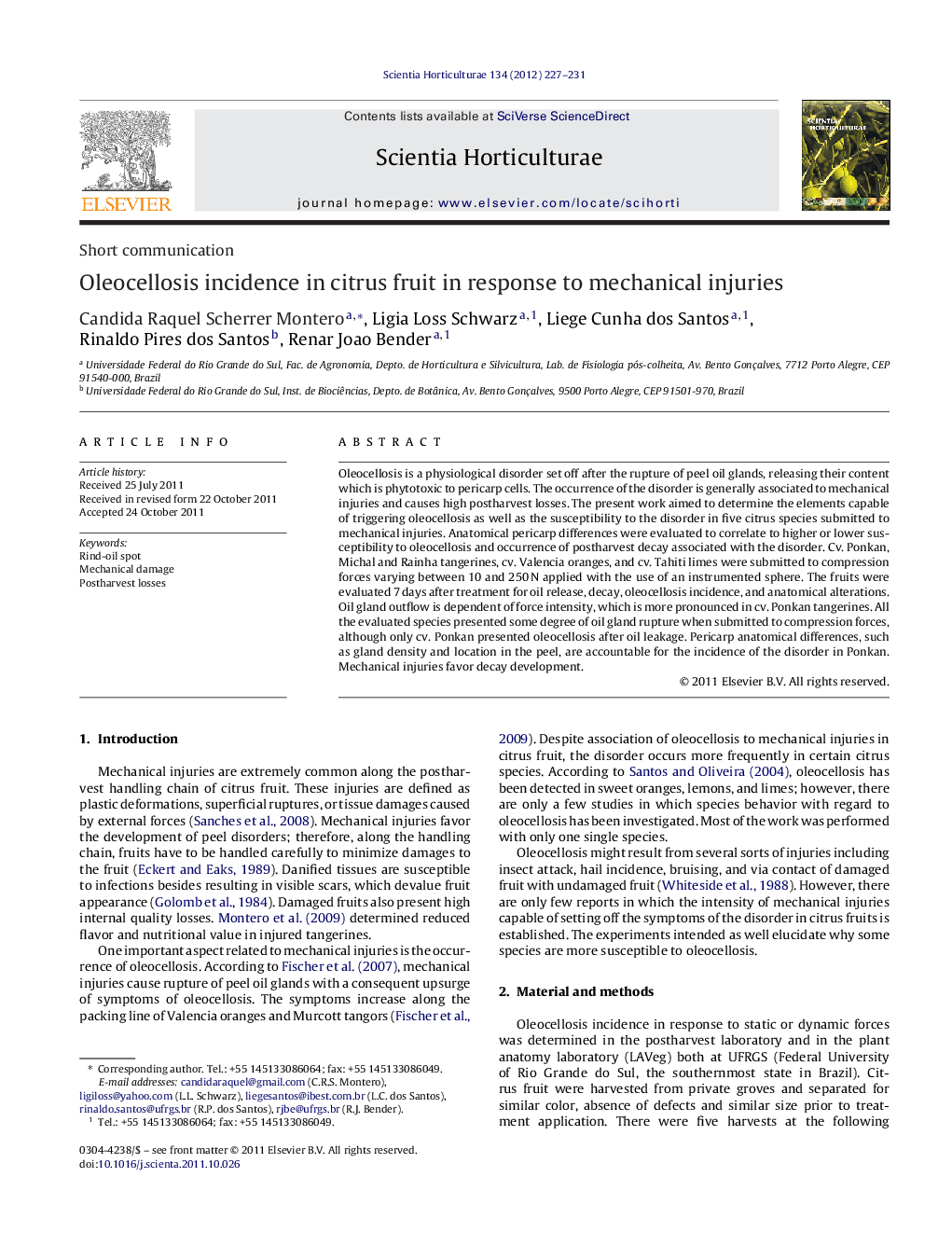| Article ID | Journal | Published Year | Pages | File Type |
|---|---|---|---|---|
| 4567781 | Scientia Horticulturae | 2012 | 5 Pages |
Oleocellosis is a physiological disorder set off after the rupture of peel oil glands, releasing their content which is phytotoxic to pericarp cells. The occurrence of the disorder is generally associated to mechanical injuries and causes high postharvest losses. The present work aimed to determine the elements capable of triggering oleocellosis as well as the susceptibility to the disorder in five citrus species submitted to mechanical injuries. Anatomical pericarp differences were evaluated to correlate to higher or lower susceptibility to oleocellosis and occurrence of postharvest decay associated with the disorder. Cv. Ponkan, Michal and Rainha tangerines, cv. Valencia oranges, and cv. Tahiti limes were submitted to compression forces varying between 10 and 250 N applied with the use of an instrumented sphere. The fruits were evaluated 7 days after treatment for oil release, decay, oleocellosis incidence, and anatomical alterations. Oil gland outflow is dependent of force intensity, which is more pronounced in cv. Ponkan tangerines. All the evaluated species presented some degree of oil gland rupture when submitted to compression forces, although only cv. Ponkan presented oleocellosis after oil leakage. Pericarp anatomical differences, such as gland density and location in the peel, are accountable for the incidence of the disorder in Ponkan. Mechanical injuries favor decay development.
► Oil gland outflow is dependent of force intensity applied over citric fruit. ► Compression forces provoked oil gland rupture in all evaluated citric species. ► Only cv. Ponkan presented oleocellosis following oil leakage. ► Gland density and location in the peel are accountable for the incidence of oleocellosis. ► Mechanical injuries favor decay development.
